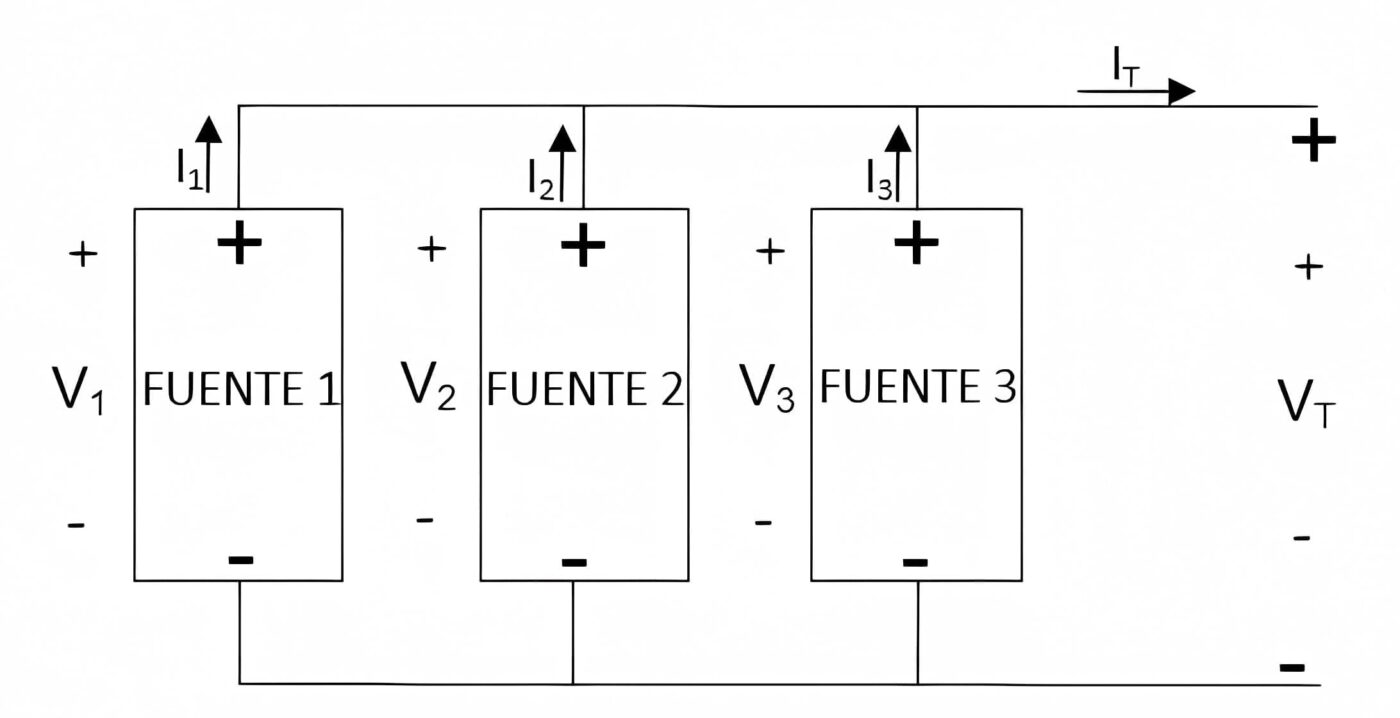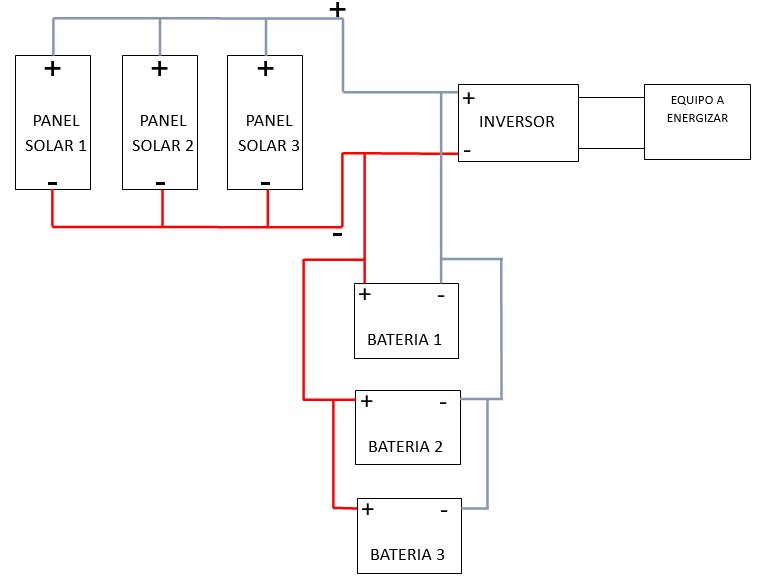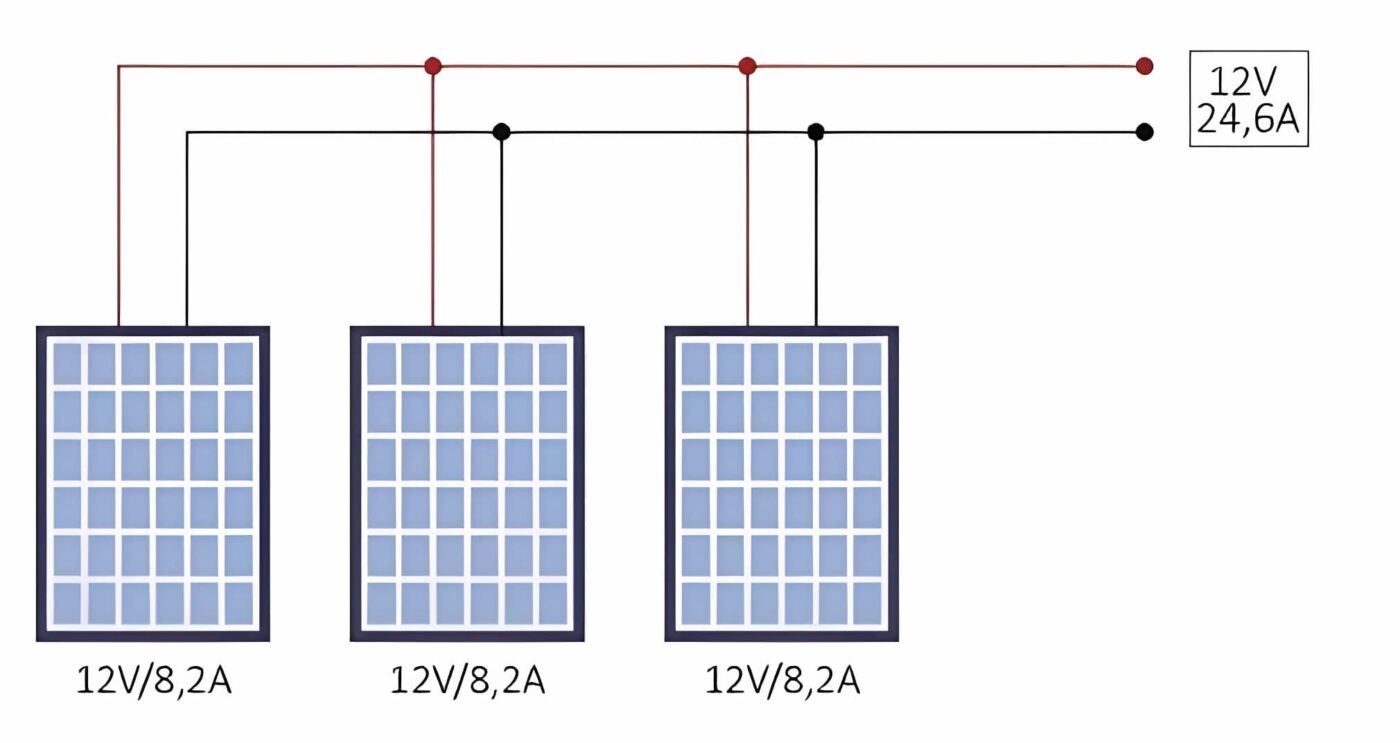AC/DC Power, Solar Energy
Parallel connection: what it involves
In this post called Parallel connection: what it involves, we will discuss one of the two configurations of electrical circuits. In terms of their connection, which is valid for both energy sources and loads.
However, in this article, we will focus on connections at the level of DC sources, their characteristics, and uses. Let’s take a look!
Parallel connection in DC
This type of connection involves connecting the positive poles and the negative poles of each element. As a main characteristic, the circuit maintains the same voltage level, and the currents of each element are summed.
In the figure shown below, you can observe the correct way to connect devices in parallel

From here, the following can be noted regarding the currents:
IT = I1 + I2 + I3
Now, concerning the voltages:
VT = V1 = V2 = V3 = V
When is parallel connection used?
The parallel connection of devices is used when you want to increase the power without increasing the voltage. This is done by maximizing the current, which is precisely one of the major advantages of the parallel connection.
For example, if you have multiple devices that operate at a specific voltage and need to power them. But a single source cannot supply enough power. Then you could connect multiple sources in parallel because:

For the circuit in the figure, the power for a single source would be: P1 = V x I1
But with the 3 sources:
P3F = V x IT = V x (I1 + I2 + I3)
Additionally, not everything in this configuration is perfect. Since it’s not applicable if you also require a higher voltage for the operation of equipment.
Applications of the parallel configuration in photovoltaic systems
This configuration is applied in solar power systems when you want it to supply a specific power at a predetermined voltage.
Let’s look at an example:
You have 3 solar panels, each with a power output of 500 watts, an inverter with a 12 VDC input. And 3 batteries, each with a 12 VDC output.
The batteries are used to supply electricity during periods of low solar irradiance or at night. Let’s assume each battery has a capacity of 100 ampere-hours (Ah).
So that you can get to know them better, we have prepared the post The battery and its generalities . There, you will learn everything you need to know about batteries.
In our sizing and design of dc power systems for telecommunications and critical systems course, you will learn how to calculate the backup time provided by the batteries
Now, back to the example. The solution would be to connect the 3 solar panels in parallel, along with the batteries, and then connect them to the inverter. The system would look like this:

It’s important to note that devices connected in parallel should ideally have the same capacity.
Additionally, batteries should have identical characteristics, and it’s not advisable to mix new and used batteries, as it can reduce the overall lifespan.
We also invite you to read the complement to this article, titled Series connection and its application in solar energy systems. Don’t miss it!
Before we conclude, we encourage you to explore the various contents we offer at energydcac. We’re confident that you’ll find them very useful and interesting. Until next time!

